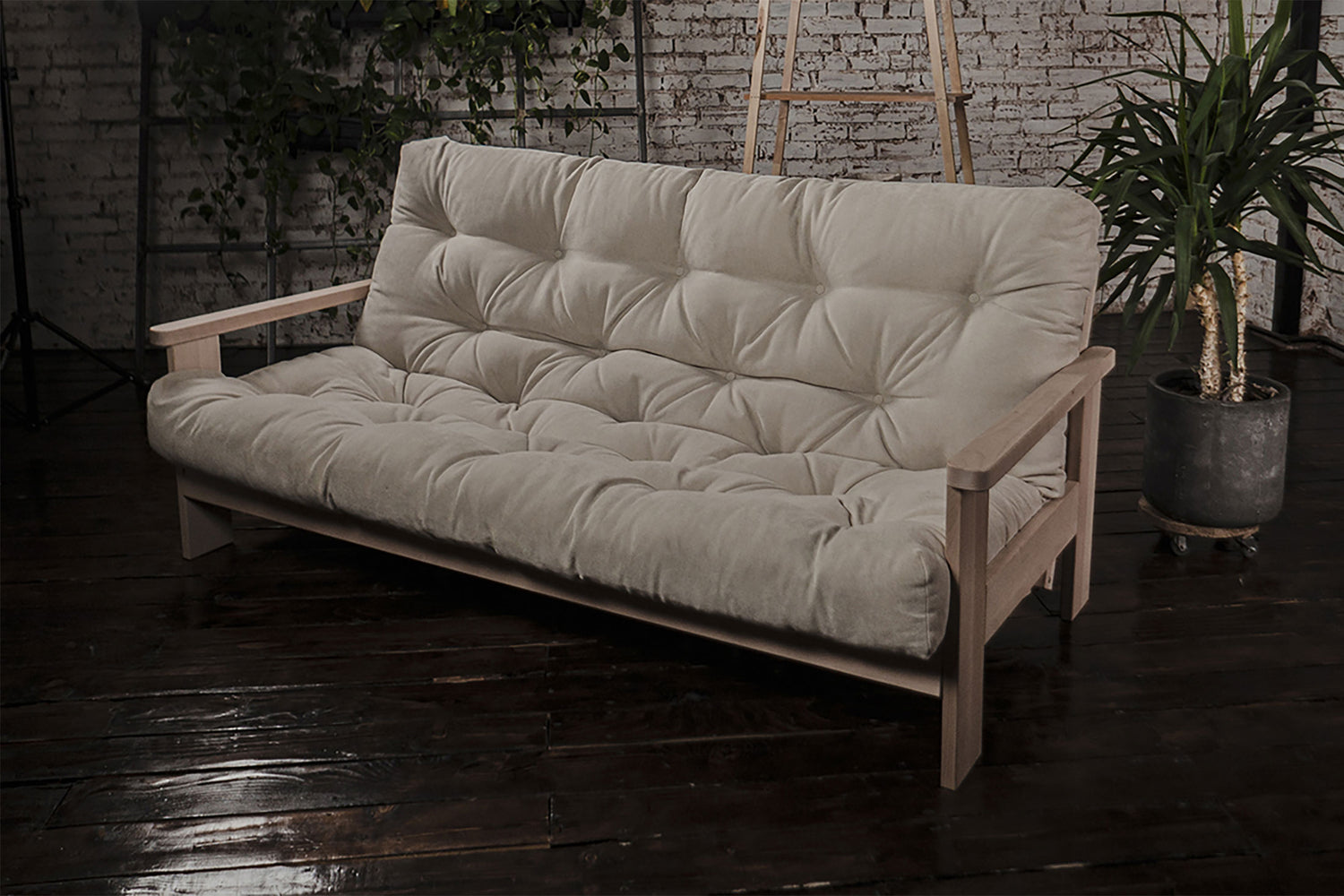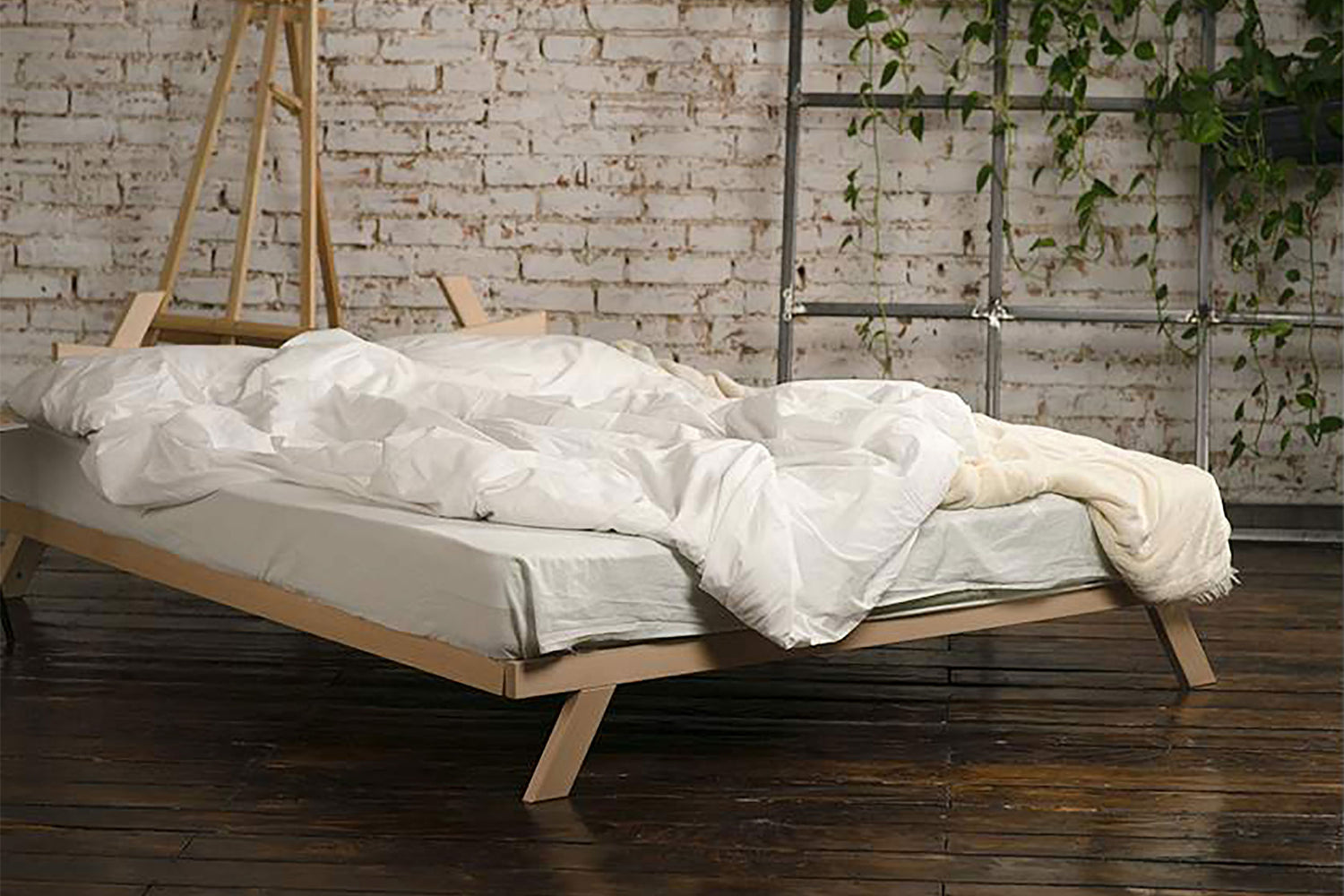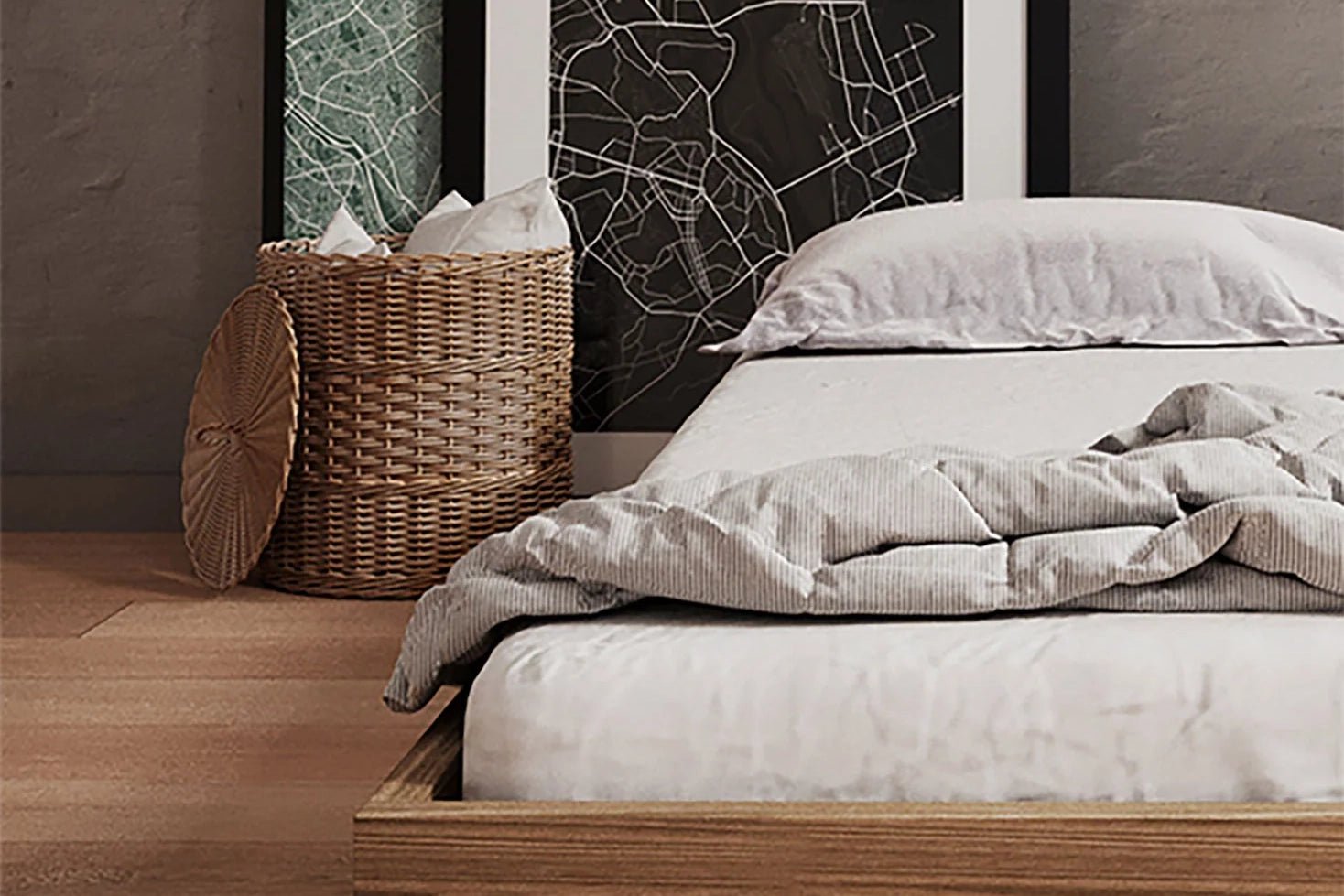
The Ultimate Guide to Floor Beds: Tradition, Benefits, and Modern Tips
Share
Floor beds have grown in popularity among minimalists, parents, and people seeking a healthier, simpler way to sleep. But what exactly is a floor bed, and why do so many cultures — particularly Japanese — embrace sleeping close to the ground? This guide explores floor beds in depth, including their benefits, potential drawbacks, and how to choose the right setup.
What Is a Floor Bed?
A floor bed is any sleeping arrangement placed directly on or near the floor rather than on a raised bed frame. Some floor beds may include a very low platform frame, while others rest directly on the floor.
People often associate floor beds with futon mattresses, tatami mats, or minimalist Japanese-inspired designs. For instance, a full-size floor bed refers to a floor-level sleeping arrangement that accommodates a standard full-size mattress.
This style of sleeping has been embraced by various cultures for centuries, most notably in Japan.

Why Do Japanese People Sleep on the Floor?
Japanese culture has a long tradition of floor sleeping. Traditionally, people use a tatami mat, a woven straw mat that provides breathability and slight cushioning, topped with a futon mattress. These elements create a supportive, low-profile sleep surface that can be folded and stored away during the day, maximizing living space.
This practice has deep roots in Japanese architecture and lifestyle, where multi-functional spaces and simplicity are highly valued.
Is Sleeping on a Floor Bed Healthy?
Many people find that a firm, supportive floor bed helps promote spinal alignment. Sleeping closer to the floor can improve posture by reducing the tendency for a mattress to sag. It can also be cooler, as heat naturally rises, keeping you more comfortable in warmer seasons.
However, floor beds aren’t for everyone. While beneficial for many, individuals transitioning from very soft mattresses might experience an adjustment period as their body adapts to the firmer support. People with joint pain, circulation issues, or trouble getting up from the ground may find them uncomfortable.
What Are the Advantages of a Floor Bed?
-
Better Posture and Support
A firmer surface, such as a futon on a tatami mat, can help keep the spine aligned. -
Minimalist Aesthetic
Floor beds bring a calm, uncluttered feel to a bedroom. -
Versatility
A foldable futon mattress can be put away daily, freeing up floor space. -
Affordability
Without a complex bed frame, floor beds can be more budget-friendly. -
Cultural Connection
Adopting a Japanese-style floor bed brings a sense of tradition and mindfulness to your space.
What Are the Disadvantages of a Floor Bed?
-
Dust and Dirt
Being closer to the floor means you’ll need to vacuum more often. -
Cold or Moisture
In damp or poorly insulated homes, sleeping on the floor can feel chilly or encourage mold. -
Accessibility
Older adults or people with limited mobility may struggle to get in and out of a floor bed.
What Age Is Appropriate for a Floor Bed?
Floor beds are popular for babies and toddlers following Montessori principles, as they promote independence by allowing children to freely access their sleeping space. There is no strict upper age limit — floor beds for adults are perfectly acceptable as long as you are comfortable sleeping low to the ground.
What Is the Floor Bed Theory?
The “floor bed theory” refers to the idea that humans are well-adapted to sleeping on firm, low surfaces. This concept is supported by traditional cultures worldwide, from Japanese futon systems to nomadic sleeping mats, suggesting that elevated beds are not strictly necessary for good rest.
Are Japanese Futon Mattresses Comfortable?
Yes, a quality Japanese futon mattress (known as a shikibuton) is designed to be supportive yet cushioned enough for daily sleep. When placed on a tatami mat, it balances firmness and gentle give, making it surprisingly comfortable for many sleepers.
Should You Use a Bed Frame with a Floor Bed?
A minimalist or low-profile bed frame can be paired with a floor mattress if you want a bit more air circulation and to protect against cold or moisture. Some people also use a simple wooden slat platform or a tatami mat base to lift the mattress slightly while preserving a floor-sleeping feel.
How to Keep a Floor Bed Clean
Because floor beds sit near the ground, cleanliness is essential:
- Sweep or vacuum around the bed frequently
- Air out your futon mattress or floor mattress regularly
- Consider using a tatami mat, which provides ventilation underneath
- Rotate and sun-dry the mattress to prevent mold
Is a Floor Bed Right for You?
Here are a few questions to ask yourself:
- Can you comfortably get down to and up from the floor?
- Do you like a firm sleeping surface?
- Are you drawn to minimalist or Japanese-inspired design?
- Can you keep your sleeping area clean and dry?
If you answered yes, then a floor bed — whether a simple futon mattress on tatami or a low-profile platform — could be an excellent choice.
Final Thoughts
Floor beds blend tradition, minimalism, and practicality into one streamlined sleep system. From Japanese-style futon mattresses on tatami mats to modern full floor beds with a low-profile bed frame, there are countless ways to tailor this ancient practice to modern living.
If you’re curious about trying a floor bed, start with a quality futon mattress and a breathable tatami mat, and experience firsthand why so many cultures have chosen to sleep closer to the earth.











